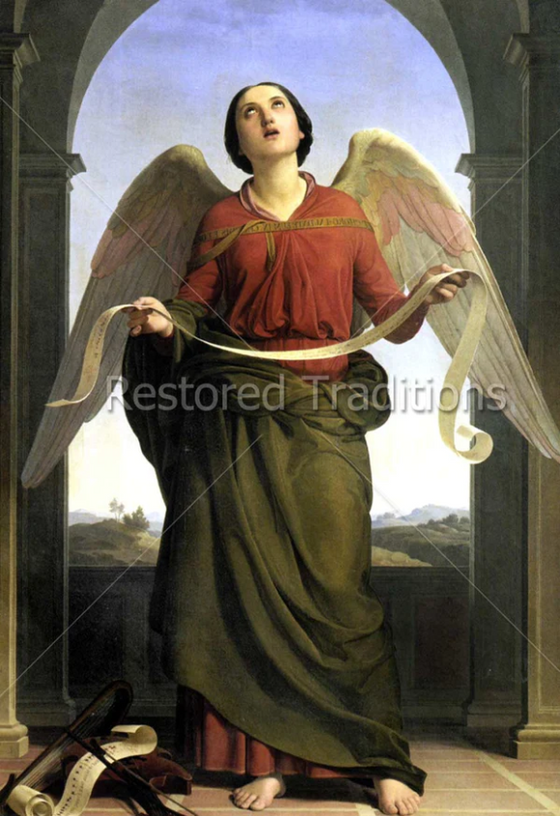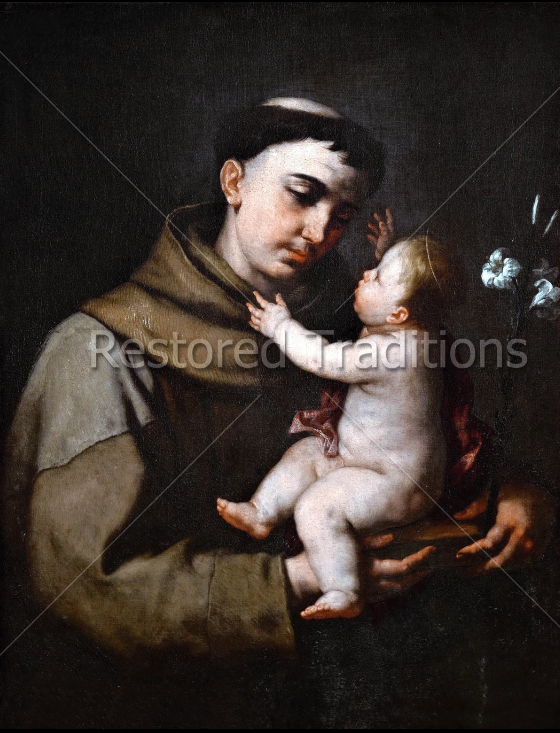
With unprecedented realism and uplifting vision, Carl Bloch shows us the wonder of Christ healing the blind man.
Bloch displays many of life’s usual suspects in this painting. There's the skeptic (red hat, on the left), the carefree child wanting to see where all the action is at (lower left center), the dutiful apostle restraining the child from interrupting the miracle (right of child), the hopeful-pious servant watching Jesus with a holy joy
(right of Jesus), the fellow right behind the hopeful-pious servant observing the skepticism of the skeptic, and the two men on top of the wall who watch with expectation but got stuck in the nose-bleed section.
All the viewers watch and wait – permanently caught in the brush strokes of Carl Bloch.
One of the more popular themes for many artists, Jesus healing the blind man, has several references in the New Testament. One that appears most fitting for this painting comes from the Evangelist Saint Mark. Right before the passage on Jesus healing the blind man, He speaks to his apostles about "whosoever shall be the first among you, shall be the servant of all. For the Son of man is not come to be ministered unto, but to minister, and to give his life a redemption for many." - Mark 10:44-45
To immediately practice exactly what He preaches, Jesus Christ shows an excellent example of "ministering": He heals a blind man. One of the other neat things about this passage is that it actually refers to the blind man by name: Bartimeus, which is a Syriac word literally translating as 'son of Timaeus'. People in the New Testament who are miraculously healed usually don't have recorded names. Perhaps this is another reason why Carl Bloch decided to paint such a prominent scene.
Jesus Christ performing the miracle of healing the blind is an example of healing mankind of his spiritual blindness. Often it becomes simple to forget about the spiritual aspect of reality, to become 'blind' to what really matters. Jesus Christ is the one to remove our spiritual blindness in order for us to continue on the road to perfection. Hopefully, we can be like the blind and 'leap up' to directly follow Christ forever.
For the verbatim story of healing the blind man, Saint Mark tells it quite well, so we finish with his rendition of the story:
“And they came to Jericho: and as he went out of Jericho, with his disciples, and a very great multitude, Bartimeus the blind man, the son of Timeus, sat by the way side begging. Who when he had heard, that it was Jesus of Nazareth, began to cry out, and to say: Jesus son of David, have mercy on me. And many rebuked him, that he might hold his peace; but he cried a great deal the more: Son of David, have mercy on me. And Jesus, standing still, commanded him to be called. And they call the blind man, saying to him: Be of better comfort: arise, he calleth thee. Who casting off his garment leaped up, and came to him. And Jesus answering, said to him: What wilt thou that I should do to thee? And the blind man said to him: Rabboni, that I may see. And Jesus saith to him: Go thy way, thy faith hath made thee whole. And immediately he saw, and followed him in the way. – Mark 10:46-52
Title: Jesus Heals the Blind Man | Artist: Carl Bloch
Joseph, a very interesting observation. I looked closer at the hand, and the irregularities in the line make it look more like the hand is holding a stick than a knife. At first I thought it may be a crack in the stucco of the background wall, but the hand is clearly holding something.
There are two heads far back there that could be the person holding the stick. One head has eyes looking to the side, while we only see the cap of the other head. It appears that the future motion of the hand holding the “stick” is about to come down on something or someone that’s out of sight and behind the wall at a lower level.
A few guesses:
1. Bartimaeus was begging on the side of the road before being healed. Perhaps there were other beggars with him, and the person holding the stick is about to beat away an unseen beggar asking for spare change.
2. The person is about to kill a fly/ bug/ rodent/ snake etc
3. An unruly child is about to get some corporal punishment
I know those explanations are all a stretch, but it’s a pretty obscure (but very interesting) portion of the image.
Patrick, any thought to the hand holding what appears to be a “knife” just upwards of the child being held back by the dutiful apostle? We look at this image every morning and have for over three years. Then, earlier this week someone made a comment about the knife in the picture which none of us had ever noticed before. Thoughts? Joseph
Comments will be approved before showing up.


Discover the Timeless Treasures of Rare Catholic Art
Immerse yourself in the rich history and spiritual depth of rare Catholic art with Restored Traditions, the premier source for digitally restored masterpieces. As an art director or creative director, you understand the power of visually compelling imagery to captivate and inspire your audience. Our extensive collection of royalty-free and copyright-free Catholic art offers you an unparalleled opportunity to elevate your projects with works of historical significance and profound beauty.
Since 2006, we have been dedicated to preserving and sharing the artistic legacy of the Catholic Church. Our team of expert digital restorers meticulously brings these rare pieces back to life, ensuring that every brush stroke and intricate detail is captured in high-resolution digital format. With over 30,000 satisfied customers worldwide, we have established ourselves as the trusted choice for those seeking authentic and impactful Catholic art.
One such masterpiece in our collection is the artwork depicting the life and legacy of St. Anthony of Padua. Born Fernando Martins de Bulhões in Lisbon, Portugal, St. Anthony’s journey from an Augustinian monk to a revered Franciscan preacher is a testament to his unwavering faith and spiritual wisdom. By incorporating the artwork of St. Anthony and other rare Catholic pieces into your designs, you can create a unique and meaningful connection with your audience.
As an art director or creative director, you have the power to shape the visual narrative of our time. Let restoredtraditions.com be your partner in telling stories that resonate with the human spirit. Explore our extensive selection of rare Catholic art today and unlock a world of inspiration and historical significance for your projects.
Patrick Werick
Author